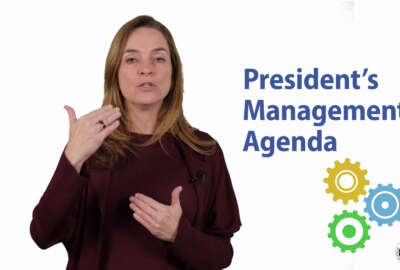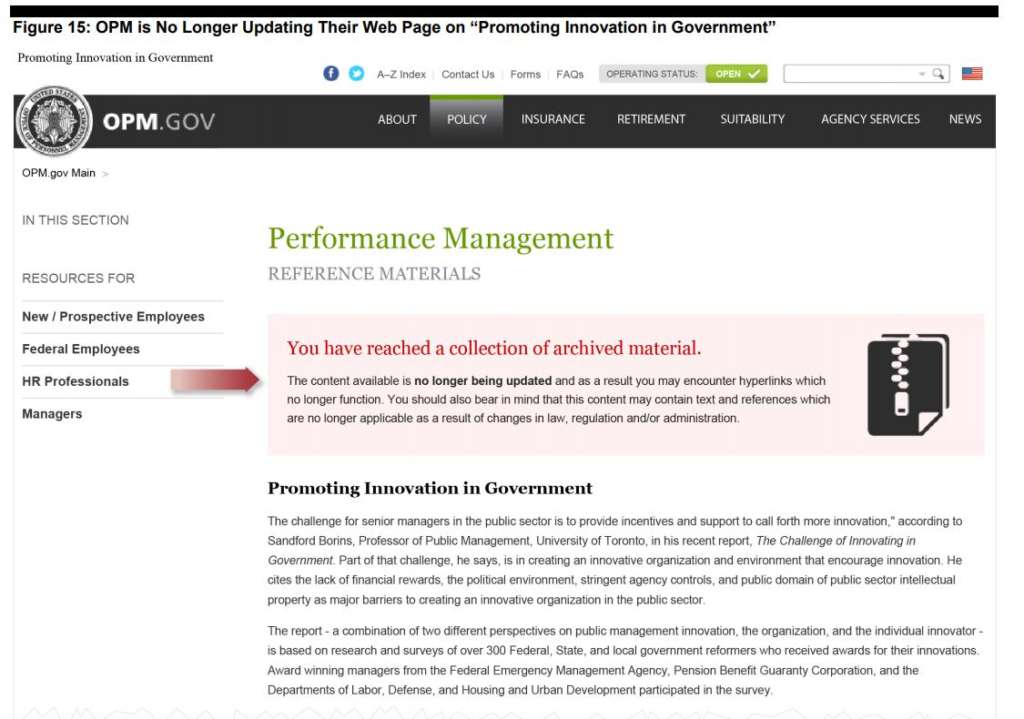
Not enough for OPM to claim ‘innovation’ in performance management, GAO says
Chief human capital officers told the Government Accountability Office they're seeking best practices, guidance and research on leading performance management...
When it comes the Trump administration’s many priorities for modernizing the federal workforce, performance management sits at the forefront. It’s a major focus in the President’s Management Agenda and was a common theme during the Office of Management and Budget’s workforce symposium with government and industry leaders earlier this fall.
But the Office of Personnel Management has an opportunity to be more of a leader in the space, the Government Accountability Office said this week, and the agency could start by more proactively championing innovative performance management practices.
It’s not enough to simply point to “innovation” as one of five OPM values to prove that the agency is, in fact, fostering a culture of innovative performance management in government, GAO said.
“Including innovation as an agency value is not sufficient to change an organization’s culture for it to become innovative,” GAO wrote in a recent report. “It is necessary to also introduce, for example, a strategy to identify and address emerging research and promising practices in performance management.”
Finding opportunities to improve how agencies manage employee performance is especially relevant in today’s environment, because “government is in a period of profound transition,” GAO said.
“To be at the forefront of innovation, OPM must consistently challenge traditional performance management practices and identify opportunities to present and promote new and creative solutions to agencies,” GAO said. “Agencies do not have access to a common forum by which they could routinely and independently share their own promising practices and lessons learned to avoid common pitfalls.”
Agencies seek more performance management best practices
GAO pointed to four agencies, all with wildly disparate missions, who have found ways to improve performance management at their organizations.
All four organizations focused on training for employees and managers, improved internal communication and used annual viewpoint data to develop action plans, GAO said. These four agencies also capitalized on their own missions and individual challenges to improve the work environment for their employees.
Leadership at the Drug Enforcement Administration, for example, view their agency’s mission as an asset and a risk for their employees. DEA actively communicates with its employees, particularly agents in the field, about the free counseling services and a special trauma team that are a part of the agency’s Employee Assistance Program.
The Office of the Comptroller of the Currency (OCC) has an internal team that analyzes annual Federal Employee Viewpoint Survey (FEVS) results, consults with leaders about how to improve on those results and coaches managers. OCC also used the annual viewpoint survey to build a business case for redesigning their performance management system, GAO said.
As part of a concerted effort to improve internal communication, the Bureau of Labor Statistics hosts quarterly breakfasts with the agency’s commissioner.
Ultimately, OPM could play a bigger role in actively disseminating best practices and agency examples like these to the rest of government, GAO said.
“While OPM officials told us that they maintain a constant scan of the environment to identify and follow promising practices — which could include innovative concepts — in the private sector and other sources to include performance management and performance management systems, they did not specifically identify which promising practices they incorporated into guidance or training,” GAO’s report reads.
Though OPM said it does update its website with new performance management materials, chief human capital officers told GAO it’s often difficult to identify what resources are considered new. GAO said updated information on the topic was difficult to find in its own searches.

One case study agency told GAO that because OPM didn’t provide the results of its research on leading private sector practices on performance management, that agency did its own analysis.
“Officials at this agency stated that OPM’s guidance was not modernized to the extent that the human capital and performance management industry was changing,” GAO said. “Without OPM taking the lead to share emerging and innovative research, agencies — and therefore their employees — may not benefit from the best information available.”
OPM agreed to GAO’s recommendations, which included working with the CHCO Council to develop a process for updating performance management information, a mechanism to share best agency practices and a strategic plan to find promising research and innovations in performance management.
Broadly speaking, the administration has also expressed an interest in transforming OPM to be a more strategic human capital partner. OMB’s government reorganization proposal argued OPM’s current policy offices could better rise to that level in the Executive Office of the President.
Copyright © 2025 Federal News Network. All rights reserved. This website is not intended for users located within the European Economic Area.
Nicole Ogrysko is a reporter for Federal News Network focusing on the federal workforce and federal pay and benefits.
Follow @nogryskoWFED




